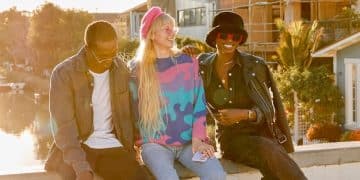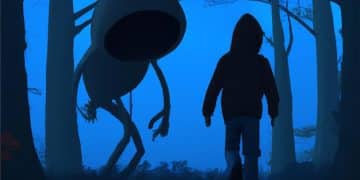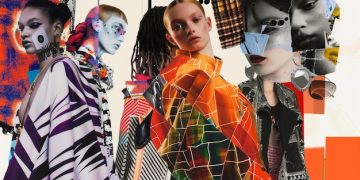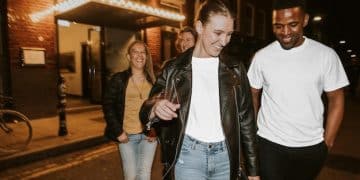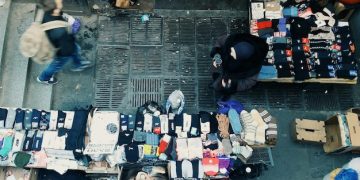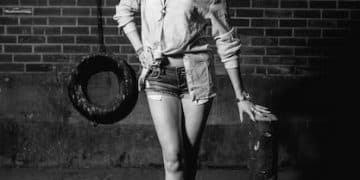Underground Fashion’s 2025 Color Forecast: Pantone’s Impact on Style
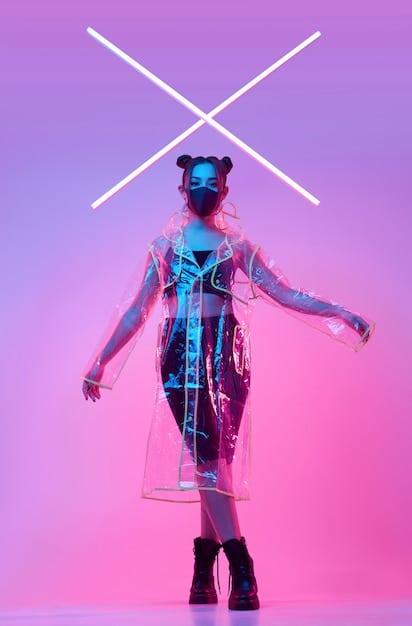
Underground fashion in 2025 will significantly draw influence from Pantone’s color predictions, shaping stylistic choices, material selections, and subcultural expressions, moving beyond mainstream trends to define unique aesthetic narratives driven by intentional color palettes. This intersection between global color authority and niche design communities promises a dynamic and innovative year for alternative styles.
The world of alternative aesthetics has always thrived on distinctiveness, often serving as a crucible for trends before they permeate mainstream culture. In 2025, the trajectory of this creative landscape, particularly its sartorial expressions, is poised to undergo a fascinating transformation. This shift is largely influenced by an unlikely yet powerful arbiter of taste: Pantone’s annual color predictions. Exploring Underground Fashion’s 2025 Color Forecast: How Pantone’s Predictions Will Impact Your Style reveals a nuanced interplay between high-level color authority and the raw, unpolished creativity inherent in alternative styles.
Understanding Pantone and Its Influence on Niche Markets
Pantone, globally recognized for its proprietary color matching system, transcends its role as a mere arbiter of shades. It functions as a powerful influencer, dictating color trends across numerous industries, from graphic design and interior decor to, crucially, the sprawling fashion landscape. For years, its ‘Color of the Year’ announcements and seasonal forecasts have rippled through mainstream collections, shaping consumer preferences and designer choices. However, its influence extends beyond the runway, subtly permeating even the most niche and alternative fashion circuits.
While underground fashion prides itself on rebellion and self-expression, it isn’t entirely immune to macro-level aesthetic shifts. Pantone’s forecasts, derived from extensive global socio-cultural and trend analysis, offer a snapshot of the collective mood, which inevitably filters down. These color palettes don’t prescribe specific styles but rather provide a foundational emotional and psychological tone, acting as a springboard for creative interpretation within subcultures.
The Psychology of Color in Alternative Aesthetics
Color is more than just an aesthetic choice; it’s a powerful tool for communication and identity formation. In underground fashion, where self-expression often challenges societal norms, color becomes a visual language. Specific hues can evoke rebellion, introspection, playfulness, or defiance. Pantone’s foresight in identifying societal shifts through color becomes particularly relevant here:
- Emotional Resonance: How certain colors resonate with feelings of angst, freedom, or community within subcultures.
- Subcultural Semiotics: The adoption and reinterpretation of mainstream colors to signify unique subcultural meanings.
- Visual Disruption: Utilizing unexpected color combinations to challenge traditional aesthetic sensibilities.
For 2025, if Pantone leans towards colors that represent introspection or stark individuality, we might see underground movements gravitating towards deeper, more muted tones or, conversely, using vibrant contrasts to assert uniqueness against a backdrop of conformity. The interpretation is never direct, but always a reaction, a subversion, or an amplification of the suggested palette.
Understanding Pantone’s methodologies—how they analyze societal shifts, technology, and art to arrive at their annual predictions—provides crucial insight into how these colors acquire their power. They are not arbitrarily chosen but are the culmination of extensive research, making them a significant barometer of the evolving global aesthetic conscience, even for those who consciously try to operate outside of it.
Ultimately, while mainstream fashion might adopt Pantone’s colors wholesale, the underground scene distills, remixes, and recontextualizes them. This nuanced influence ensures that while the seeds of color trends might originate from a global authority, their flowering in alternative styles is uniquely their own, imbued with the specific ethos and narrative of each distinct subculture.
Key Pantone Color Directives for 2025: A Deep Dive
As we anticipate Pantone’s official declarations for 2025, we can project likely themes and palettes based on current socio-economic trajectories, technological advancements, and burgeoning artistic movements. Forecasting these dominant color directives is crucial for understanding how they will be reinterpreted by underground fashion. General trends suggest a dichotomy: a push towards comforting, earthy tones reflecting a desire for stability, alongside a surge of vibrant, digitally-inspired hues representing innovation and escapism.
We might observe a continued emphasis on sustainable and natural dyes, pushing the prevalence of organic greens, muted browns, and sandy beiges. Simultaneously, the digital realm and metaverse influences could inspire saturated neons, holographic sheens, and surreal pastels. This duality perfectly mirrors the complex and often contradictory nature of contemporary society, a fertile ground for underground fashion’s expressive power.
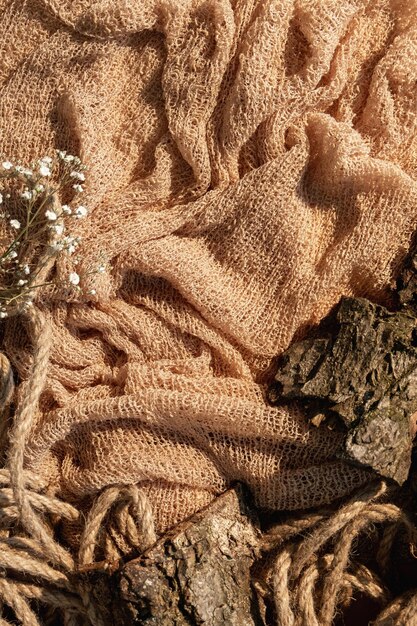
Anticipated Palettes and Their Emotional Weight
Forecasting based on societal cues, one could predict a leading color family evoking a sense of grounded tranquility. Imagine deep forest greens, reminiscent of nature and regrowth, or rich, warm terracottas that speak to comfort and authenticity. These would appeal to sustainability advocates and those seeking solace in a chaotic world. Another strong contender would be a spectrum of ethereal, almost futuristic blues and purples, hinting at digital escapism, artificial intelligence, and the vast unknown of space. These would resonate with cyberpunk, tech-wear, and experimental aesthetics.
- Earthy Comforts: Shades like ‘Rooted Clay,’ ‘Verdant Hush,’ or ‘Desert Bloom’ symbolizing stability, natural connection, and quiet resilience. These would be embraced by cottagecore, dark academia, and some grunge aesthetics.
- Digital Escapes: Colors such as ‘Aether Blue,’ ‘Quantum Violet,’ or ‘Cyber Glow,’ reflecting technological immersion, virtual realities, and futuristic optimism. Ideal for cyberpunk, rave culture, and abstract avant-garde styles.
- Rebellious Reds/Oranges: A fiery, yet grounded red or an electric orange, signifying passion, activism, and bold self-expression. Think ‘Revolt Red’ or ‘Empathy Ember,’ perfect for punk, rock, and protest-oriented fashion.
The precise names and shades Pantone announces will carry specific nuances, but the overarching emotional and societal messages behind them are what truly influence. Underground designers and wearers often intuitively grasp these underlying currents, reinterpreting them through their own unique lenses. This means that if a particular shade of serene blue is popular, it might be applied in a distressed, deconstructed manner in underground circles, transforming its ‘calm’ into a ‘brooding’ or ‘melancholic’ calm.
The beauty of Pantone’s influence on underground fashion lies in this recontextualization. Mainstream adoption aims for harmonization; underground adoption seeks to provoke, subvert, or redefine. This dynamic relationship ensures that while the color story originates from a centralized authority, its most compelling chapters are written in the fringes.
From Runway to Alleyway: How Underground Designers Adapt Pantone
The journey of a Pantone color from a meticulously curated trend report to the gritty, innovative world of underground fashion is far from linear. Unlike commercial brands that might directly adopt forecasted palettes, underground designers engage in a process of reinterpretation, subversion, and often, outright rebellion against mainstream predictability. Their approach is less about adherence and more about extracting the essence of a predicted hue, then bending it to fit their distinct aesthetic and philosophical narratives.
Consider a hypothetical Pantone color for 2025: “Tranquil Teal,” a serene, calming blue-green. A typical mainstream brand might use it in flowy, minimalist garments. An underground designer, however, might apply it to distressed denim, creating a faded, almost melancholic vibe that juxtaposes the color’s inherent calm with a sense of weariness or defiance. Or, they might use it in stark, aggressive geometric patterns on technical fabrics, transforming tranquility into an unsettling, futuristic coolness.
Strategies of Subversion and Reinterpretation
Underground designers rarely adopt colors verbatim. Instead, they employ various strategies to make Pantone’s predictions their own:
- Deconstruction: Breaking down a color’s perceived meaning by applying it to unexpected textures or garments. A “youthful” yellow might be used on a heavy, industrial fabric.
- Juxtaposition: Pairing a ‘popular’ Pantone color with harsh, clashing tones or unconventional patterns to create visual dissonance.
- Aesthetic Dilution/Saturation: Using a forecasted color in an extremely faded, almost washed-out form, or conversely, in an intensely oversaturated, almost toxic state, to alter its emotional impact.
This alchemical process transforms a mere shade into a statement. Underground fashion thrives on challenging norms, and color is a potent tool in this arsenal. If a certain color is deemed ‘mainstream’ or ‘safe,’ its appearance in underground circles might be a deliberate act of irony or a re-appropriation, stripping it of its commercial connotations and imbuing it with a new, subversive meaning.
Furthermore, underground designs often prioritize unique fabrication and textural experimentation. A Pantone color might be selected not just for its hue, but for how it interacts with unconventional materials – think recycled plastics dyed in vibrant shades, or upcycled fabrics subtly stained with a forecasted earthy tone. This interplay between color, material, and form is where underground creativity truly shines, making each piece a testament to individuality and thoughtful design.
The essence of underground fashion lies in its capacity for independent thought and creative autonomy. While global color forecasts from entities like Pantone provide a cultural backdrop, the true artistry unfolds in how these seeds of influence are cultivated, twisted, and transformed into something authentically novel and deeply resonant within the specific niche communities they serve.
The Evolution of Subcultures Through Color: Case Studies (Hypothetical)
Throughout history, color has been an integral part of subcultural identity, acting as a visual banner for shared beliefs and aesthetics. From the punks’ defiant black and red to goths’ monochromatic palettes, colors define and distinguish. For 2025, anticipating Pantone’s influence requires us to consider how existing and emerging subcultures might integrate or reject these new color directives. This isn’t about direct adoption, but rather a dynamic assimilation where colors are molded to fit established narratives or spark new ones.
Let’s consider a few hypothetical scenarios where Pantone’s 2025 predictions, such as a strong emphasis on “Digital Aqua” (a vibrant, almost neon blue) or “Rustic Umber” (a deep, grounding brown), could play out within specific underground movements.
Reinterpreting Predicted Hues:
- Neo-Gothic Revival: If “Rustic Umber” is a key tone, a new breed of goth might integrate it, perhaps through aged leather, distressed velvet, or earthy knitwear, elevating their dark romanticism with a touch of decayed naturalism previously less prevalent. This moves beyond traditional black into a more organic, yet still melancholic, aesthetic.
- Cyberpunk/Tech-wear Evolution: Should “Digital Aqua” dominate, it would seamlessly integrate into cyberpunk, but with a twist. Instead of just neon accents, we might see full garments in this saturated hue, often paired with matte blacks or grays for stark contrast, signifying digital fluidity and a near-future aesthetic. This pushes beyond the typical neon green or hot pink, offering a cooler, more analytical vision of dystopia.
- Eco-Punk Movement: Imagine a burgeoning eco-punk subculture emerging, heavily influenced by sustainability. If Pantone emphasizes organic, earthy tones, this group might reclaim discarded fabrics and dye them with natural pigments in these shades, then deconstruct and reassemble them into rebellious, utilitarian garments, turning ‘natural’ into ‘radical.’
These hypothetical scenarios highlight how underground cultures absorb universal color shifts and then re-contextualize them within their specific ideological frameworks. The key is never a passive acceptance, but an active, often defiant, act of re-creation. The new colors don’t merely sit alongside existing palettes; they become new tools for articulating identity, community, and critique.
Moreover, the influence isn’t always overt. Sometimes, it’s about the absence of a predicted color, a deliberate rejection that itself makes a statement. If “Sunshine Yellow” is the color of the year, a particularly dark or avant-garde subculture might intentionally avoid it, using their palette’s stark contrast to emphasize their non-conformity. The dialogue between mainstream trends and underground responses is always rich and multifaceted.
Ultimately, the evolution of subcultures through color is a testament to their dynamic nature. They are not static entities but living organisms that adapt, innovate, and continuously define themselves through visual language, with Pantone’s forecasts serving as an unexpected, yet potent, point of reference.
Ethical Considerations and Sustainability in Underground Color Choices
As the fashion industry faces increasing scrutiny over its environmental and ethical footprint, underground fashion, often by its very nature of anti-establishmentarianism, has a unique opportunity to lead by example. While Pantone’s forecasts influence aesthetic direction, the choice of *how* those colors are realized—through dyes, fabrics, and production methods—becomes paramount. This intersection of predicted hues and responsible creation is where underground fashion can truly differentiate itself and champion sustainable practices.
The push for ethical sourcing and environmental consciousness aligns intrinsically with many underground subcultures that value authenticity, DIY ethos, and a rejection of mass consumerism. This means that if Pantone predicts a trend towards vibrant blues, an underground designer might prioritize blues derived from natural indigo dyes or upcycled materials rather than synthetic, chemical-laden alternatives. The “look” is influenced, but the “how” is dictated by a deeper ethical commitment.
Sustainable Dyeing and Material Innovation
The future of color in underground fashion is intrinsically linked to material innovation and sustainable dyeing practices. This extends beyond merely choosing organic fabrics; it involves exploring:
- Natural Dyes: Utilizing plant-based dyes (e.g., madder for reds, indigo for blues, turmeric for yellows) that are biodegradable and less chemically intensive.
- Upcycling and Repurposing: Giving new life to existing garments and textiles by dyeing or over-dyeing them in new Pantone-inspired shades, reducing waste.
- Low-Impact Synthetics: When synthetic colors are necessary for vibrancy or durability, opting for those with certified low environmental impact or closed-loop production processes.
The visual appeal of naturally dyed garments, with their often softer and more nuanced hues, can also become part of the aesthetic signature of certain underground movements. This subtle shift from perfectly uniform, chemically-derived colors to more organic, imperfect shades can itself be a statement against industrial standardization.
Furthermore, transparency in the supply chain is gaining traction. Underground brands, even small independent ones, are increasingly asked to articulate their sourcing and production methods. This is not just a trend but a growing expectation from a more conscious consumer base within alternative communities. The choice of a particular shade might be inspired by Pantone, but the story behind its creation—was it ethically made, sustainably dyed, and produced without exploitation?—will increasingly define its authenticity and acceptance within underground circles.
Therefore, 2025’s color forecast for underground fashion isn’t just about what colors will be seen, but how those colors will embody a deeper set of values. It’s a dynamic interplay between aesthetic desire and ethical imperative, pushing the boundaries of both style and responsible production.
The Commercialization Conundrum: Balancing Authenticity and Trend Integration
One of the perennial challenges for underground fashion is navigating the delicate balance between maintaining its authentic, anti-establishment roots and the inevitable gravitational pull of mainstream trends and commercialization. When a global authority like Pantone signals a color direction, it doesn’t just influence designers; it also subtly shapes consumer perception and demand. This creates a conundrum for underground brands: how to leverage relevant color trends without compromising their core identity, which often thrives on being niche, defiant, or avant-garde.
The risk of commercialization is that unique styles become diluted or mass-produced, losing their critical edge or subversive appeal. For a subculture built on counter-narratives, adopting a ‘trendy’ color without radical reinterpretation could feel like capitulation. However, complete isolation from major aesthetic shifts can also lead to stagnation or irrelevance. The key lies in strategic integration, where external influences are filtered through an unwavering commitment to originality.
Strategies for Authentic Integration:
- Limited Edition Releases: Introducing Pantone-inspired colors in small, collectible runs, emphasizing their exclusivity and bespoke nature, rather than mass production.
- Subtle Nod, Not Overt Homage: Incorporating the forecasted colors in unexpected ways, such as lining, internal stitching, or distressed accents, rather than a dominant display.
- Narrative-Driven Design: Ensuring that any use of a trendy color is firmly embedded in a compelling narrative or statement unique to the brand or subculture, thereby reclaiming its meaning.
Underground designers often excel at this subversive adaptation. They might take a seemingly ‘safe’ Pantone color and infuse it with a dark, humorous, or politically charged message through graphics, silhouettes, or material choices. This approach flips the script, turning a potentially commercial trend into a tool for artistic expression and social commentary.
Moreover, the underground fashion market benefits from a highly engaged and discerning consumer base. These individuals are often acutely aware of mainstream trends and appreciate brands that offer original alternatives. They seek authentic expression, not mere replication. Therefore, designers who successfully navigate the commercialization conundrum do so by deeply understanding their audience and maintaining a dialogue that reinforces shared values.
Ultimately, 2025 will test the agility of underground fashion in absorbing broad color trends while staying true to its rebellious spirit. The best outcomes will see Pantone’s predictions not as dictates, but as a rich palette of possibilities, creatively reinterpreted to forge new, authentic statements that continue to define the innovative edge of style.
Beyond Predictability: The Emergence of Anti-Forecast Colors
While Pantone’s color forecasts undeniably wield significant influence, the very existence of an “underground” fashion scene often implies a deliberate rejection of established norms. This includes, at times, a conscious movement toward colors that intentionally defy mainstream predictions—what we might term “anti-forecast colors.” For 2025, anticipating these counter-trends is just as important as understanding the official predictions, as they represent the true spirit of rebellion and innovation within niche communities.
These anti-forecast colors aren’t merely random. They often emerge from a deep-seated desire for originality, a rejection of perceived commercialism, or an embrace of hues that carry specific, niche cultural significance. They might be colors that Pantone has deemed ‘out of season’ or too difficult to integrate commercially, becoming fertile ground for underground appropriation. Or, they could be entirely new, experimental shades born from digital art, unconventional material exploration, or even performance art.
Characteristics of Anti-Forecast Palettes:
- Intentional Obscurity: Choosing shades that are deliberately difficult to categorize or that exist outside conventional color wheels.
- Subversive Combinations: Pairing colors that are traditionally considered clashing or aesthetically unpleasing in mainstream contexts, to create a jarring, avant-garde effect.
- Contextual Significance: Using colors that hold specific, possibly controversial or highly localized, meaning within a particular subculture, rather than universal appeal.
For example, if 2025 is dominated by comforting pastels, an underground movement might lean heavily into abrasive, industrial grays or sickly, desaturated greens to evoke a sense of dystopia or technological decay. Similarly, a surge of natural, earthy tones could be met with a resurgence of stark, artificial neons or iridescent metallics, signaling a preference for the synthetic over the organic.
The beauty of anti-forecast colors lies in their capacity for unexpected impact. They force viewers to re-evaluate their aesthetic biases and challenge preconceived notions of “good” or “bad” taste. This defiance is precisely what keeps the underground scene fresh and vital, constantly pushing the boundaries of what is considered fashionable or desirable.
Ultimately, the relationship between Pantone’s forecasts and underground fashion is not one of simple cause and effect, but a complex, dynamic interplay. While the official predictions provide a valuable lens for understanding broader aesthetic currents, the emergence of anti-forecast colors reminds us that true originality often blossoms in defiance of the expected, ensuring that underground style remains a powerful harbinger of future trends, sometimes even dictating them in return.
| Key Aspect | Brief Description |
|---|---|
| 🎨 Pantone Influence | Pantone’s global color forecasts subtly shape the psychological and emotional backdrop for underground style in 2025. |
| 🔄 Designer Adaptation | Underground designers don’t adopt directly but reinterpret, subvert, or deconstruct forecasted colors to maintain unique identity. |
| 🌱 Ethical Choices | Sustainability in dyeing and material sourcing becomes crucial, aligning color trends with ethical production values. |
| 🚫 Anti-Forecast | Expect the emergence of “anti-forecast” colors, deliberately chosen to defy mainstream predictions, reinforcing rebellious authenticity. |
Frequently Asked Questions About Underground Fashion and Color Trends
▼
Pantone influences by setting a global aesthetic mood, which underground fashion reacts to rather than directly adopts. It might subvert, ironically use, or entirely reject prevalent colors, creating a dialogue with mainstream trends. This reaction is itself a form of influence, prompting unique interpretations and fostering distinct subcultural expressions.
▼
Not necessarily. Underground fashion’s uniqueness stems from its reinterpretation of trends. While it may incorporate certain colors, it almost always does so with unique silhouettes, textures, and philosophical messages that transform the color’s meaning. The emphasis remains on individuality and pushing boundaries, not on conformity.
▼
“Anti-forecast” colors are hues intentionally chosen to deviate from mainstream predictions. They are important because they symbolize a deliberate rejection of commercialism and underscore independent aesthetic thought. These colors highlight rebellion, cultural niche significance, and often lead to unexpected and innovative visual outcomes.
▼
You can incorporate trends ethically by choosing natural dyes, supporting brands using upcycled materials, or repurposing existing garments. Look for local designers who prioritize transparency in their supply chain and sustainable production methods. Emphasize quality over quantity and unique, ethically made pieces over mass-produced items.
▼
Beyond color, look for trends influenced by digital integration (AI, metaverse fashion), increased focus on circular economy and upcycling, and gender-fluid designs. Political and social activism will also continue to inspire styles, leading to narrative-driven garments that make strong statements through both aesthetic and messaging.
Conclusion
The forthcoming year promises a compelling evolution for underground fashion, intricately woven with the nuanced influence of Pantone’s 2025 color predictions. Far from being a direct adoption, this relationship is a sophisticated dance between global trends and subcultural ingenuity. Underground designers and enthusiasts will continue to dissect, subvert, and reinterpret these predicted palettes, using them not as boundaries but as springboards for radical self-expression. Simultaneously, the imperative for ethical sourcing and sustainable creation will increasingly shape how these colors are manifested, cementing the underground’s role as a proving ground for responsible innovation. As we move into 2025, the dynamic interplay of forecasted hues and counter-cultural rebellion will ensure that underground fashion remains a vibrant, unpredictable, and ultimately, profoundly influential force in defining what style truly means.
